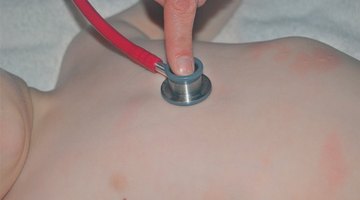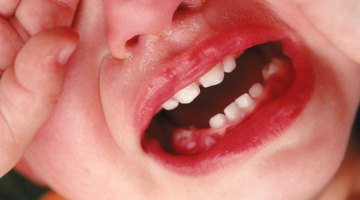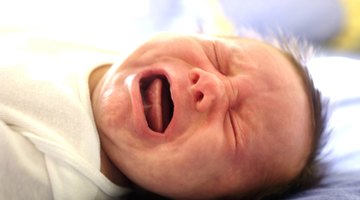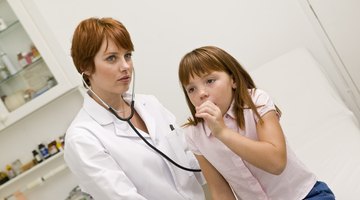Gasping in Babies & Toddlers
Gasping behavior in infants and toddlers means that they aren't getting enough air. Many times, this indicates that the airway is obstructed. Gasping can indicate a number of serious conditions.
While some cases of croup and bronchiolitis are mild, if your child is struggling to breathe, it probably indicates a more severe infection. If your child experiences these symptoms, take him to the emergency room to get them quickly evaluated and treated.
Foreign Body
Toddlers may put objects in their mouth, leading to a dangerous obstruction of the respiratory tract. According to an article published in 2009 in the "International Journal of Medical Sciences," these events are the most common cause of accidental death in childhood.
Children who aspirate a foreign body can have choking followed by noisy breathing.
If the airway is completely blocked, children cannot breathe and the condition is serious.
If you think your child has inhaled an object, slap your baby's back if she is less than 1 year old.
If she is older, try the Heimlich maneuver. Bring your baby to the hospital immediately.
Bronchiolitis and Pneumonia

How to Help a Wheezing Toddler
Learn More
Bronchiolitis and pneumonia are common infections that can happen in babies and toddlers.
Bronchiolitis is usually caused by viruses and affects babies between 3 and 6 months of age. Pneumonia can be caused by bacteria or viruses.
Both diseases can cause difficulty breathing with gasping breaths, along with fever and cough. If your child has this set of symptoms, bring him in for a prompt medical evaluation.
Croup
Croup is an infection, usually caused by the parainfluenza virus. The infection is involves the trachea, larynx and epiglottis.
Children are most affected between 3 months and 5 years of age and may have a characteristic "croupy" cough, which sounds similar to a seal bark. Children may have difficulty breathing as they inhale, and they may produce a high-pitched sound due to partial obstruction of the airway. Croup varies in severity, and while mild cases can be treated at home, severe cases should be treated in the hospital to prevent the airway from closing.
Asthma

A Bad Cough Is Keeping My Infant Awake at Night
Learn More
You may think of asthma as a disease of older children, but toddlers can be affected, too. According to Baby Center, 80 percent of children with asthma are affected before their fifth birthday. Asthma is a disease in which the airways episodically constrict, leading to difficulty breathing. It may be hard to distinguish asthma from bronchiolitis. Children with asthma often have parents, grandparents or siblings with allergic diseases.
Asthma can be treated with drugs delivered through the respiratory tract. A variety of metered-dose inhalers are available for very young children.
Congenital Heart Disease
Congenital heart diseases include a variety of malformations of the heart. Some of these diseases may not cause symptoms at birth. Depending on the type of heart disease, children can have episodes of gasping for air and and a bluish discoloration of the extremities, called cyanosis. Children with congenital heart disease often need surgery to correct their problem.











